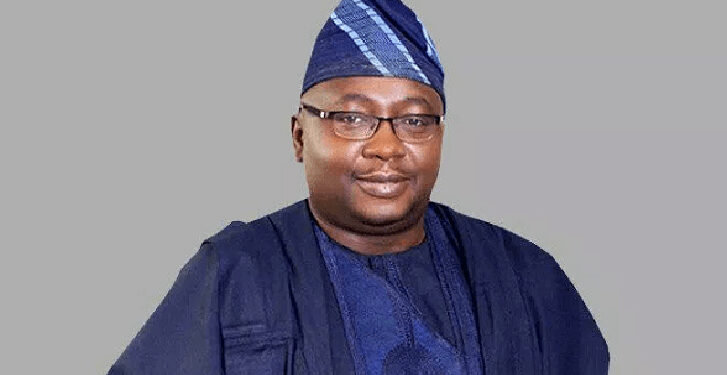Grid collapse threatens minister’s 6000MW generation target
The recent collapse of Nigeria’s electricity grid has raised questions on the stability of the Nigeria Electricity Supply Industry (NESI) in achieving the 6,000-megawatt electricity production by December as forecasted by the Minister of Power, Adebayo Adelabu. Recall that the last one week turned out to be one of the worst for the NESI with […]

Minister of Power, Adebayo Adelabu
The recent collapse of Nigeria’s electricity grid has raised questions on the stability of the Nigeria Electricity Supply Industry (NESI) in achieving the 6,000-megawatt electricity production by December as forecasted by the Minister of Power, Adebayo Adelabu.
Recall that the last one week turned out to be one of the worst for the NESI with the grid experiencing three collapses in five days.
The cause of the first collapse which occurred last week Monday is yet to be stated by the Transmission Company of Nigeria (TCN).
While the second on Tuesday was blamed on a challenge during restoration of the grid, the third collapse on Saturday was caused by a transformer explosion at the 330kV Jebba transmission substation.
- CNG: Commercial drivers, others task govt on infrastructure, refueling stations
- Jigawa tanker explosion: Death toll rises to 180
These incidents knocked off the daily average power generation on the electricity grid to below 5,000MW during the week with data from Independent System Operator (ISO) showing the peak generation during the week was 4,807MW on Friday.
This is a drop of 298MW from the 5105MW that was generated on July 27th, 2024, the highest in the last three years.
Already, the minister has accused some electricity distribution companies (DisCos) of deliberately refusing to take up more power supply from TCN, stagnating power generation that has not risen above the 5105MW since July.
With less than two months to December, the NESI is not looking promising to achieve the minister’s aim even though the addition of the 700MW Zungeru Hydro Power Plant has contributed a great deal in making generation capacity crossing the threshold of 5,000MW.
The President of Nigeria Consumer Protection Network, Kunle Olubiyo, said it is not possible for Nigeria to generate 6,000MW with the transmission network in a woeful state.
He said already, the grid is obsolete without a spinning reserve and Back Start Equipment that is essential to optimal function of the grid.
“There is no SCADA (Supervisory Control and Data Acquisition ), which is a device that enhances the automation of the grid, it takes records and sequences of events on the grid and we don’t have an effective one which in any sane climes, you can’t operate a grid without it. Most of our system protections that are supposed to be on the grid are obsolete,” he said.
He added that the country also lacks a mechanised vegetation control to clear the lines from weeds and other plants which could make the lines trip off when there is contact.
“There is also a weak line of materials coupled with political induced recruitment processes where merits have been jettisoned. The dearth of different layers of national power grid protective scheme and protective devices is also there while poor investment in manpower development, training and capacity building is bane to the sector,” he added.
Olubiyo urged the minister to focus on addressing this before making promises that won’t materialise at the end of the day.
Adelabu had blamed persistent grid collapse to the deplorable conditions of the country’s national grid infrastructures.
The minister speaking in Lagos last week said, “What we do now is to make sure that we manage it. And in the last four months, we have not heard of any grid collapse, except two days ago, while we had a partial collapse that didn’t even last two hours. So, what we work on now is to improve our response time, to bring it up each time.
“Transformers of 60-year-old, 50-year-old, lines that have been there since the 60s, and you’re expecting them to perform at the optimal rate 40 years after; it is not possible, which is why we need a lot of investments in this infrastructure to bring them up to speed, to bring them up to the state that is able to give us a grid that will not collapse again.”
